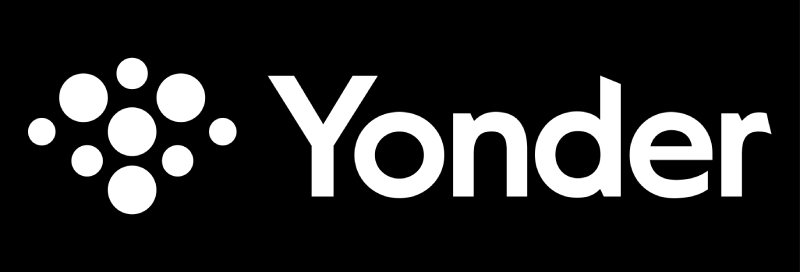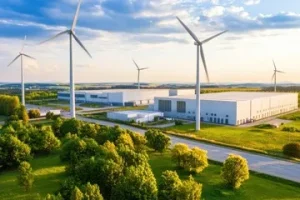How AI is Revolutionizing DC–DC Converter Control in 2025
In today’s world of fast-evolving technologies, the demand for smarter, faster, and more efficient power conversion has reached new heights. Traditional methods are being stretched to their limits as systems become more complex and dynamic.
AI offers the ability to make DC–DC converters more adaptive, self-correcting, and predictive. From automotive applications to renewable energy storage systems, AI is helping converters learn from their environments and make smarter decisions in real time.
Moreover, the role of AI in power electronics is not limited to control. It extends to design optimization, system diagnosis, thermal management, and lifecycle analysis. The holistic integration of AI into the design, deployment, and operation stages of DC–DC converters is shaping a future where intelligent energy systems are the standard.
Traditional Control Systems: Where They Fall Short
Historically, DC–DC converters have relied on PID (Proportional-Integral-Derivative) controllers and analog circuitry to regulate voltage and current. While reliable, these systems have several limitations:
- Fixed control parameters not adaptable to changing environments
- Poor handling of non-linearities and system noise
- Lack of fault prediction and self-healing capabilities
- Difficulties in managing complex, interconnected systems
These limitations hinder the potential of high-performance applications such as smart grids, autonomous vehicles, and dynamic IoT systems. Conventional systems require constant manual tuning and are less effective in fluctuating or harsh operating environments.
The AI Revolution in Converter Control
Types of AI Technologies Used
- Machine Learning (ML): For pattern recognition, fault detection, and adaptive control
- Neural Networks: For non-linear system modeling and control
- Fuzzy Logic: For decision-making in ambiguous environments
- Digital Twins: Virtual replicas of physical converters for predictive analysis
How AI Enhances Control Systems
- Adaptive Learning
- AI systems can adjust control parameters dynamically based on environmental feedback (e.g., temperature, load changes).
- Fault Detection and Prediction
- AI identifies early warning signs of system degradation or impending failure, allowing proactive maintenance.
- Efficiency Optimization
- Continuous learning models help optimize efficiency across various operating points.
- Robustness
- AI control handles noise, distortion, and unpredictable system behavior more effectively than conventional methods.
- Scalability
- Smart converters can communicate and coordinate with other units in large systems like microgrids.
- Auto-Configuration and Tuning
- AI reduces commissioning time by automatically configuring control settings based on load profiles.
- Multi-Objective Decision Making
- AI can balance trade-offs between efficiency, thermal performance, and reliability in real time.
Real-World Applications in 2025
- Electric Vehicles (EVs)
AI-based converters adapt to rapid load changes, reduce energy waste, and improve battery life. Predictive control helps maintain optimal performance across driving conditions. Integration with BMS (Battery Management Systems) allows intelligent power routing and regenerative braking efficiency.
- Renewable Energy Systems
DC–DC converters in PV and wind systems use AI for Maximum Power Point Tracking (MPPT) and battery management. AI also balances supply-demand fluctuations in real time. Additionally, AI models predict solar irradiation and wind patterns, enabling more proactive energy storage management.
- IoT and Edge Devices
AI allows for ultra-low power operation and self-tuning converters in constrained environments like wearable tech, smart homes, and sensor networks. AI also manages power harvesting from ambient sources, such as light or vibration, to extend device lifetime.
- Telecommunication Infrastructure
5G and edge computing facilities require adaptive power systems. AI enables remote diagnostics, predictive maintenance, and load balancing, ensuring uninterrupted service and energy cost optimization.
Challenges in Implementing AI in DC–DC Converters
Despite the promise, AI adoption in converter control comes with hurdles:
- Hardware Constraints
- Limited processing power in compact converters may not support advanced AI models.
- Real-Time Requirements
- AI algorithms must operate within microseconds for fast-switching systems.
- Training Data and Model Reliability
- Poor or insufficient data can lead to unreliable AI decisions.
- Cybersecurity Risks
- Networked, AI-controlled converters are vulnerable to cyberattacks.
- Cost
- Integration of smart controllers increases BOM (Bill of Materials).
- Model Explainability
- Many AI models operate as “black boxes,” making it difficult to verify safety and regulatory compliance.
Future Outlook: What Lies Ahead
- Edge AI Chips: More compact, efficient processors that can support AI locally
- Federated Learning: Distributed training of AI models across multiple converters
- AI-Enhanced GaN/SiC Converters: Smarter use of wide-bandgap semiconductors for ultra-efficient systems
- Standardization: Development of open standards for smart converter protocols and security
- Self-Healing Systems: AI will help converters self-repair by reconfiguring power paths or reducing stress in real time
- AI-Aided Design Tools: Automated design platforms using AI for schematic layout, thermal design, and control simulation
The fusion of AI and power electronics is set to become the new norm, especially in energy-critical sectors like EVs, aerospace, and industrial automation.
Frequently Asked Questions (FAQs)
Q1. Can AI completely replace traditional control methods in converters?
A: Not yet. AI often works in tandem with traditional methods to enhance robustness and flexibility.
Q2. Are AI-powered converters more expensive?
A: Initially, yes. But they offer long-term cost savings through efficiency gains and reduced maintenance.
Q3. How do AI converters handle unpredictable load conditions?
A: By learning from past patterns and adjusting control strategies in real time.
Q4. Are there security concerns with AI-driven converters?
A: Yes. Like any networked device, they can be targeted. Strong encryption and monitoring are essential.
Q5. What industries are leading in AI-powered converter adoption?
A: Automotive (EVs), renewable energy, aerospace, and data centers are early adopters driving AI integration.
Conclusion: Time to Think Smart
AI is not just a buzzword in 2025. It’s a game-changer for DC–DC converter control. From smarter EVs to resilient renewable energy systems, AI enables better performance, reliability, and adaptability.
As the complexity of power systems grows, so does the need for intelligence. If you’re an engineer, researcher, or tech enthusiast, now is the time to explore or invest in AI-based power solutions.
The power landscape is changing. Embracing AI means more than just better converters—it means smarter infrastructure, cleaner energy, and more sustainable tech ecosystems.
Ready to Power the Future?





